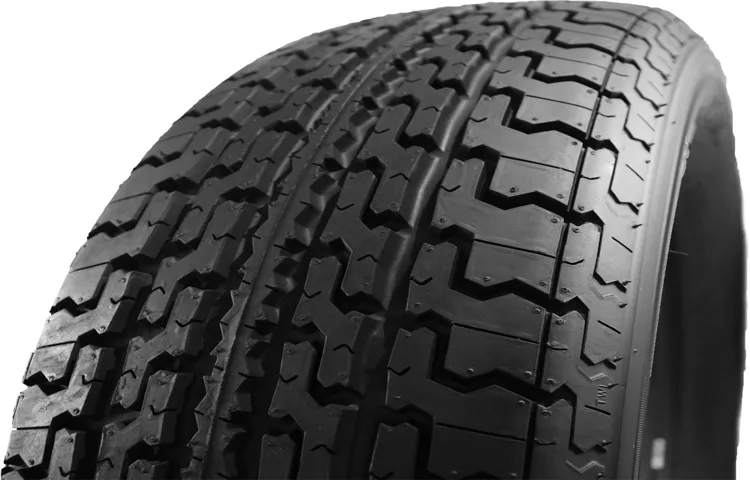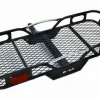Are you puzzled by your tire size? Do those numbers and letters engraved on your tires seem like hieroglyphics to you? Fear not, for understanding tire sizes is easier than you think! Just like shoes and clothes have sizes, tires do too. And like the perfect fit gives you comfort and safety, so does choosing the right tire size for your car. The size of your tire is not just a random set of numbers and letters.
It actually contains important information that helps you choose the proper tire for your vehicle. From the width of the tire to its aspect ratio, load index, and speed rating, each detail affects your car’s performance and safety on the road. Think of it this way – tire sizes are like your car’s DNA.
They dictate everything from how well your car grips the road to how comfortably you ride. Understanding tire sizes will not only give you a better understanding of your vehicle but also help you choose the best tire for your driving needs. So, if you’re ready to demystify tire sizes and make informed choices for your car’s tires, keep reading.
We’ll break down each element of your tire’s size and its significance, so you can confidently hit the road with the right tires for your car.
Table of Contents
What Do the Numbers on Tires Mean?
If you’re wondering what size tire a 225-75r15 actually is, you’re not alone. The numbers on a tire’s sidewall can be a bit confusing at first glance, but they actually give you a lot of information about the tire’s size, load capacity, and speed rating. In the case of a 225-75r15 tire, the “225” refers to the tire’s width in millimeters, while the “75” represents the tire’s aspect ratio or height as a percentage of its width.
The “r15” indicates that this tire is meant to fit a wheel with a diameter of 15 inches. Knowing these numbers can help you choose the right size tire for your vehicle, ensuring optimal performance and safety on the road.
225-75r15: Breaking Down the Code
As you browse through the different types of tires in the market, you may notice a series of numbers and letters inscribed on their side walls. These tire codes might seem like a jumble of random characters, but they actually contain important information about the tire’s size, type, and capabilities. One example of this code is the 225-75r15, a common tire size for SUVs and light trucks.
The first number, 225, represents the tire’s width in millimeters. The second number, 75, signifies the tire’s aspect ratio or the height of the sidewall in relation to the width. The letter “r” denotes the tire’s construction type, which in this case, is radial.
Finally, the number 15 indicates the diameter of the wheel rim in inches that the tire is designed to fit. Understanding these tire codes is crucial when choosing the right set of tires for your vehicle, as they greatly affect performance, handling, and safety on the road.

What Does Each Number and Letter Represent?
If you’re wondering what size tire a 225-75R15 represents, let’s break it down. The first number “225” represents the width of the tire in millimeters from sidewall to sidewall. The second number “75” represents the aspect ratio, which is the height of the sidewall as a percentage of the width.
In this case, the height is 75% of the width, so the taller the sidewall will be compared to a tire with a lower aspect ratio. The letter “R” indicates that this is a radial tire, which means the internal layers of the tire run horizontally across the wheel. Finally, the last number “15” represents the diameter of the wheel in inches.
So, a 225-75R15 tire is 225 millimeters wide, has a sidewall height of 75% of that width, is a radial tire, and fits a 15-inch diameter wheel. Knowing all of these numbers and letters can help you find the perfect tire for your vehicle.
225: Tire Width in Millimeters
When looking at a tire, you’ll notice a sequence of numbers and letters on its side. These numbers and letters represent various tire measurements, with the first number indicating the tire width in millimeters. For instance, if you see a tire with 225/45R17 written on it, “225” represents the tire width.
This measurement is crucial because it determines how much surface of the tire comes into contact with the road, affecting the grip and handling of the vehicle. The wider the tire, the greater the contact patch and the better the grip in corners and on wet roads. However, wider tires also have their drawbacks, such as increased rolling resistance and noise.
Therefore, when selecting tires, it’s essential to consider various factors, including tire width, to ensure optimal performance and safety.
75: Aspect Ratio, Tire Height as a Percentage of Width
In the tire industry, you may have come across numbers and letters like “225/50R17” or “265/70R1” These numbers and letters represent the tire’s aspect ratio and tire height as a percentage of width. The aspect ratio is the numerical difference between the tire’s height and width (in millimeters) and is represented by the first set of numbers in the code.
The tire height as a percentage of width is represented by the second set of numbers. For example, a tire with an aspect ratio of 50 means that the tire’s height is 50% of its width. The letter that comes after the aspect ratio represents the tire’s construction type, with “R” denoting radial construction.
The final number in the code refers to the wheel diameter in inches that the tire can fit. So, the next time you’re shopping for tires, don’t let these numbers and letters confuse you, as they provide important information about the tire’s size and construction.
r: Indicates Radial Construction Type
When it comes to tires, there are several numbers and letters that represent different aspects of the tire’s construction and performance. One of those letters is “r,” which indicates radial construction type. Radial tires are the most common type of tire on the market today, and for good reason.
They offer superior handling, better fuel economy, and a smoother ride than their bias-ply counterparts. The “r” in a tire size designation stands for radial, which means that the tire’s cords run perpendicular to the direction of travel. This allows the tire to flex more easily and maintain more contact with the road surface, resulting in better traction, greater stability, and improved driving comfort.
So if you’re in the market for new tires, be sure to look for that “r” in the size designation to ensure you’re getting the best possible performance out of your vehicle.
15: Wheel Diameter in Inches
When it comes to the size of car wheels, it can be confusing trying to decipher what each number and letter represents. One important measurement to consider is the wheel diameter, which is typically listed in inches. The first number represents the diameter of the wheel itself, meaning the distance between one edge of the wheel to the other edge passing through the center of the wheel.
The second number, if present, represents the width of the wheel, meaning the distance between the innermost and outermost edges of the wheel. Finally, the letter following both numbers represents the type of tire that should be fitted to the wheel. For example, a wheel with the measurement 17x
5J indicates that the wheel has a 17-inch diameter and a 5-inch width, and the letter J indicates that the wheel is designed to fit a tire with a bead seat diameter of approximately 14 inches. Understanding these measurements can help you choose the appropriate size for your car’s wheels and tires, ensuring maximum performance and safety on the road.
What Size Tire Is a 225-75r15?
If you’re wondering what size tire is a 225-75r15, then you’re in the right place. This tire size indicates that the tire width is 225 millimeters, the aspect ratio is 75%, and it sits on a 15-inch rim. The “R” in the middle indicates that it’s a radial tire, which is the most common type of tire on the road today.
So, in simpler terms, a 225-75r15 tire is approximately 23 inches in overall diameter (including the tire, sidewall, and rim). This makes it an excellent choice for SUVs, light trucks, and vans.
With its rugged construction and excellent traction, it’s ideal for off-road adventures or daily commutes. So, if you’re in need of a new set of tires for your vehicle, be sure to consider the 225-75r15 size for a reliable and durable choice.
The Answer: A 225-75r15 Tire Fits a 15-Inch Wheel
If you’re wondering what size tire is a 225-75r15, the answer is quite simple. A 225-75r15 tire is designed to fit a 15-inch wheel. This tire size is typically used on light trucks, SUVs, and even some vans.
The first number, 225, represents the width of the tire in millimeters. The second number, 75, represents the aspect ratio of the tire. In other words, the sidewall height is 75% of the width of the tire.
The “r” stands for radial, indicating the design of the tire’s construction, while the last number, 15, represents the diameter of the wheel in inches. It’s essential to choose the right tire size for your vehicle to ensure proper handling, braking, and overall safety. Using the wrong size tire can affect the vehicle’s performance, fuel economy, and even cause damage to the vehicle.
So, if you’re in the market for new tires for your 15-inch wheels, a 225-75r15 tire provides a great option for many light trucks, SUVs, and vans.
Conclusion
In conclusion, the size tire that is a 225-75r15 is one that is easy to remember – it’s the Goldilocks of tires, not too big and not too small, but just right. It’s a versatile and popular size, suitable for a wide range of vehicles and road conditions. So, whether you’re cruising down the highway or off-roading in the mountains, a 225-75r15 tire will surely provide the right balance of comfort, stability, and performance.
Just don’t ask it to make you breakfast, because that’s not its job (but it might be able to help you drive to the diner). “
FAQs
What do the numbers 225-75r15 on a tire mean?
The first number (225) represents the width of the tire in millimeters, the second number (75) is the aspect ratio which represents the height of the sidewall as a percentage of the width, and the last number (15) is the diameter of the wheel in inches.
What vehicles use a 225-75r15 tire size?
This tire size is commonly used on trucks, SUVs, and vans such as the Chevrolet Silverado, Ford F-150, and Dodge Ram.
Can I use a tire with a different aspect ratio than my original tire?
It is not recommended to use a tire with a different aspect ratio than what was originally equipped on your vehicle. This can affect the handling and performance of your vehicle.
What is the load capacity for a 225-75r15 tire?
The load capacity varies depending on the specific brand and model of the tire. It is important to check the load index and speed rating of the tire to ensure it is suitable for your vehicle.
What is the average lifespan of a 225-75r15 tire?
The lifespan of a tire depends on several factors including driving habits, road conditions, and maintenance. On average, a 225-75r15 tire can last between 40,000 to 60,000 miles.
Can I replace just one tire in a set of 225-75r15 tires?
It is not recommended to replace just one tire in a set as it can affect the handling and performance of your vehicle. It is recommended to replace all four tires at the same time.
What is the recommended tire pressure for a 225-75r15 tire?
The recommended tire pressure varies depending on the specific brand and model of the tire. The recommended tire pressure can be found on the tire sidewall or in the vehicle owner’s manual. It is important to maintain proper tire pressure for optimal performance and safety.



